How do you Grow Kale from Seed?
This can be a difficult question to answer for beginner gardeners because of complex factors like weather, soil, and pests.
This article will help solve this problem and give ALL experience levels of gardeners Easy-to-Follow Tips on growing kale from seed.
And I recommend scrolling to the bottom of this page to find answers to the 5 most frequently asked questions most gardeners have when growing kale.
Tip #1: Choose THESE 5 Kale Types
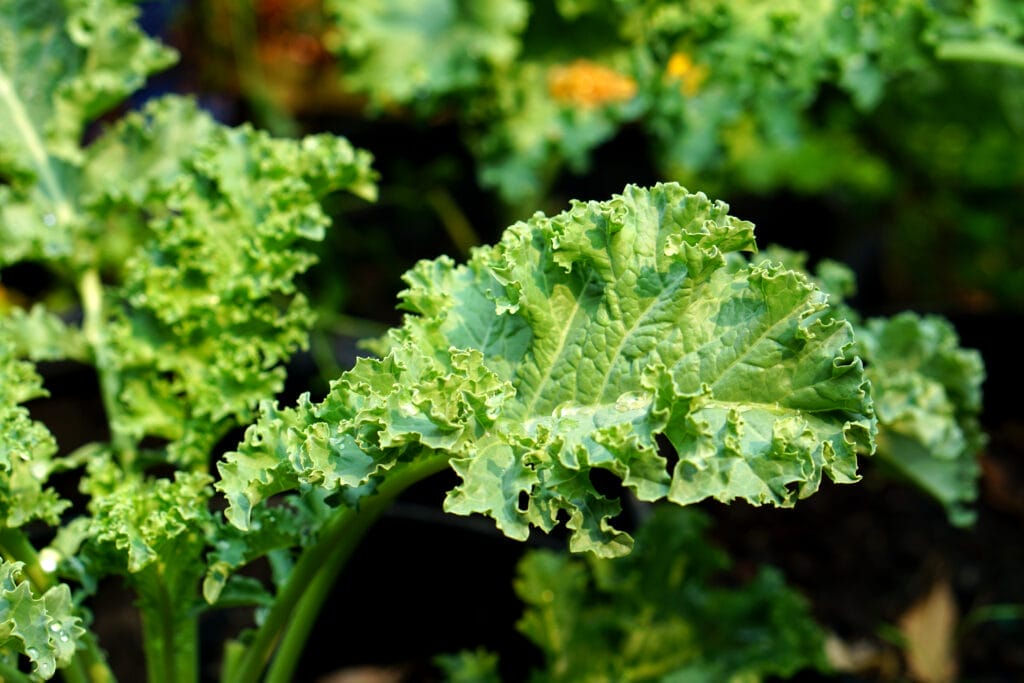
While there are hundreds of varieties of kale you can grow, I am recommending 5 kinds to choose from.
These are the easiest types when trying to learn how to grow kale from seed.
A) Curly Kale
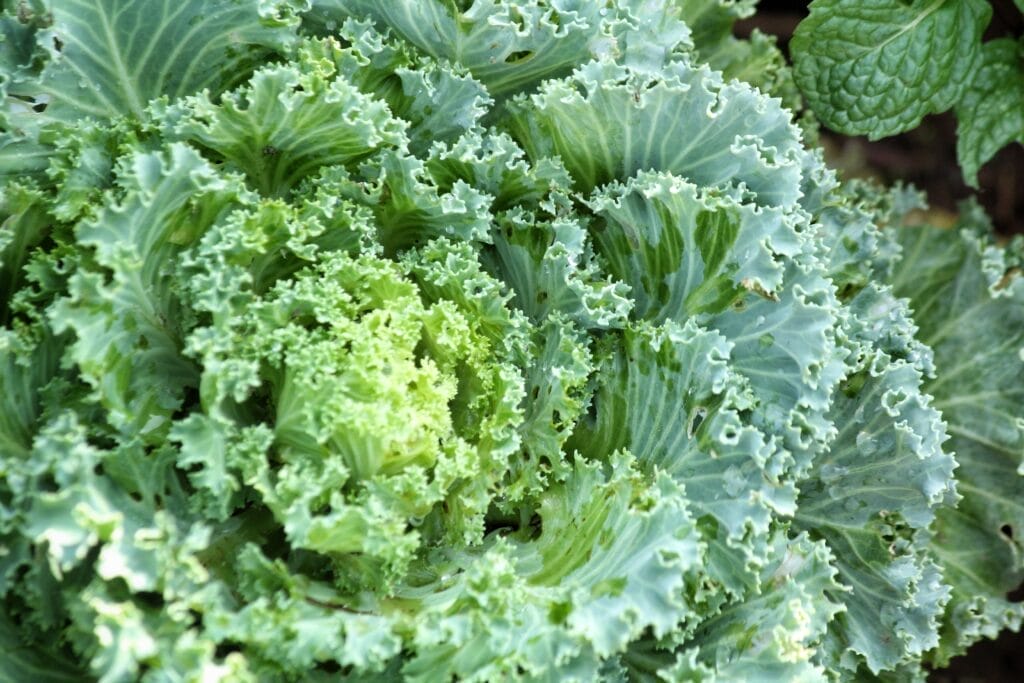
Curly Kale is the type of kale that you typically see in grocery stores and supermarkets.
This type of Kale is known for its dark green and purple colors, curly shape, and bitter/pepper flavor.
You’ll find this type of kale in smoothies, cooked, eaten with olive oil or raw, and even in stir-fry.
Best of all is that it is the most versatile type of Kale. It can be grown in cold and warm climates and is resistant to pests and disease.
B) Winter Red Kale
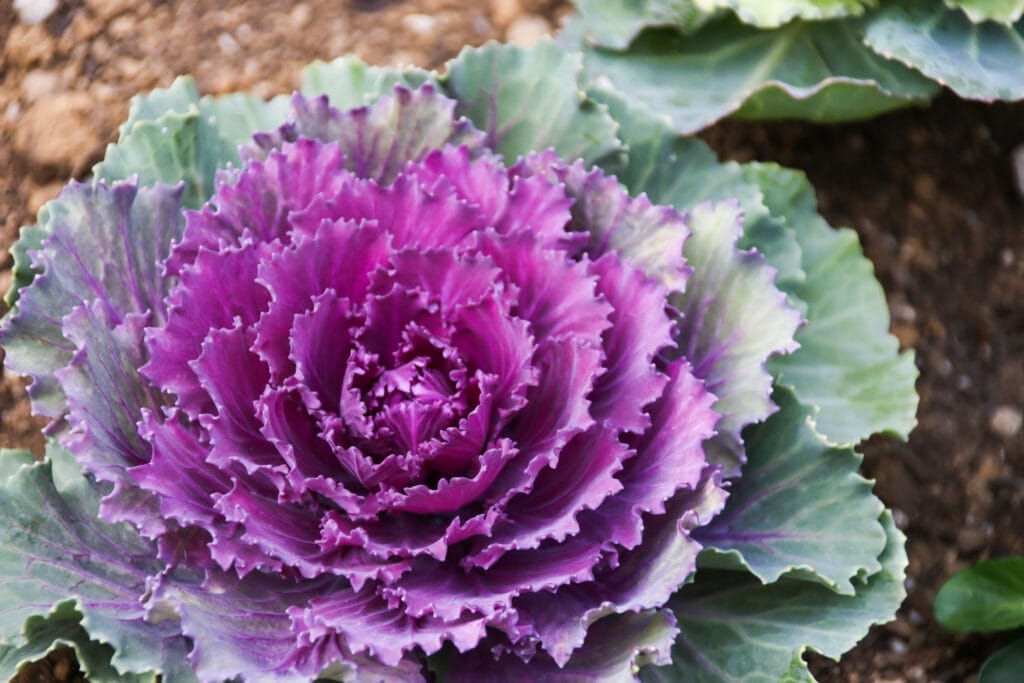
If you are interested in growing a type of kale that is winter hardy then look no further than winter red kale.
This type of Kale has smaller leaves, are flat and wide, and have a bright green color with red stems and stalks.
What sets this type of Kale apart is how tender it tastes, how much more flavor it has when exposed to frost, and how it is the perfect type of kale for salads.
C) Red Russian Kale

The Red Russian Kale is ranked every year as consumers and gardeners’ favorite type of kale.
It has a red stem, light green, and thin leaves. Not only this, but it is a great type of kale to grow all year long. Best of all is that it is disease-resistant and pest-resistant.
You can eat this type of kale raw, in salads, and even added to some cooked dishes. You’ll love how this is filled with vitamin c, iron, and calcium
D) King Kale

Everyone loves growing and eating king kale.
King Kale is incredibly easy to grow, full of fiber, iron, calcium, copper, and numerous vitamins including A.
This type of Kale has an unbelieveable flavor, texture, and can be used in anything from salads to baked into chips.
E) Lacinato Kale

Lacinato Kale is known for it’s long, dark green and gray leaves that help create an elegant garden.
The thick, long stems make this the best type of kale for boiling and braising.
Not only this but this one of the few types of Kale that thrives in hot, dry climates.
Best of all is that it is packed with lots of nutrients and is great for soups, pesto, and stews.
Tip #2 Starting Seeds Indoors

Because of its ability to withstand low temperatures, growing kale from seed can happen indoors and outdoors. Please read below for instructions on how to grow kale from seed both indoors and outdoors.
Step 1 – Begin Planting Seed 6 weeks Before the Last Frost

You will want to start your seeds inside approximately 6 weeks before you plan on moving your kale into your garden or moving your planter outside.
- You will first want to start by buying your seed. I recommend buying from Amazon because it is quick and inexpensive.
- You will then want to take 3-inch GrowKo Peat Pots and fill them up to approximately 80% full with Miracle-Gro Potting Mix.
- Next, spray your soil 5 to 8 times with a spray bottle. You will want the soil to be moist, not damp. Damp soil can cause unwanted fungus.
*Find Your Last Frost Date HERE*
Step 2 – Lightly sprinkle 4-5 Seeds Per Pot

- Because of how small kale seeds are it is sometimes to grab the1 or 2 seeds and plant them. Instead, sprinkle 4-5 seeds per pot about 1/8 inch deep and then gently brush the soil over the seeds. *Note, it is ok if more than 5 seeds fill a hole.
- Then spray the soil again 5 to 8 times until it turns a dark color.
The video below also gives a great tutorial on how to plant seeds.
Step 3 – Provide Your Seeds with At Least 8 Hours of Sunlight

- After planting your seeds, provide at least 8 hours of sunlight by placing the pots by a window or a Grow Light if your windows do not receive enough sunlight.
*If you put your seeds closer than 4 inches they will burn and die. If you put them further away than 4 inches there is a chance they won’t get enough sun to germinate.*
You will also want to keep the room temperature between 50-65 degrees Fahrenheit. With that being said, you can even grow kale seeds in temperatures as low as 40 degrees Fahrenheit.
- This is the temperature needed so that your seeds can turn into plants.
If you don’t have an area that will stay consistently around 50-65 degrees, I would recommend investing in a Plant Heating Mat.
- A Plant Heating Mat is the perfect way to keep your pots and seeds at a consistent temperature that we may not otherwise be able to.
Step 4 – Spray, Spray, Spray
After your initial planting, you will need to spray the soil once to twice a day for approximately 10 days.
It will take approximately 10 days for your seeds to germinate or “pop” through the soil.
Once your seeds have germinated and sprouted through the soil, you will want to continue to spray them twice a day for 4 more months until they are ready to transplant outside.
Step 5- Prune & Transplant your Kale Plant into a Larger Pot

Once your kale grows for about 3-4 weeks you can either begin to thin it to allow only one plant to grow or keep all plants in the pots. If you keep all plants there is a chance that they will not grow as full as just one kale.
You can do this by taking scissors and snipping the smaller of the plants right at the soil line. This will allow the healthier kale plant to grow to its full potential.
Next, you can transplant your kale plant to a 5 Gallon Nursery Pot.
Again, you will want to fill these pots about 80% full with your potting mix.
Next, you will want to make a hole approximately 3 inches deep (about the size of your kale plant at this point).
Then turn your existing small pot upside down, pinch the bottom of it, and then gently pull the soil and your plant out.
You will then place it in your 5-gallon pot and fill it with soil.
Immediately after you do this, spray the soil about 5 to 10 times.
You will then want to leave your kale in this pot until it is ready to transplant outside.
Step 6 – Introduce your Kale to Outside Weather
This next step is what most beginner gardeners miss, but is critical to your success.
For about two weeks, you will want to slowly introduce your Kale to outside.
On the first day, you will want to place your Kale (still in its pot) outside in direct sunlight for approximately 2 hours.
Each day thereafter, place the Kale outside for an additional hour until you build up to 6 straight hours.
Tip #3: Transplant Kale Outside
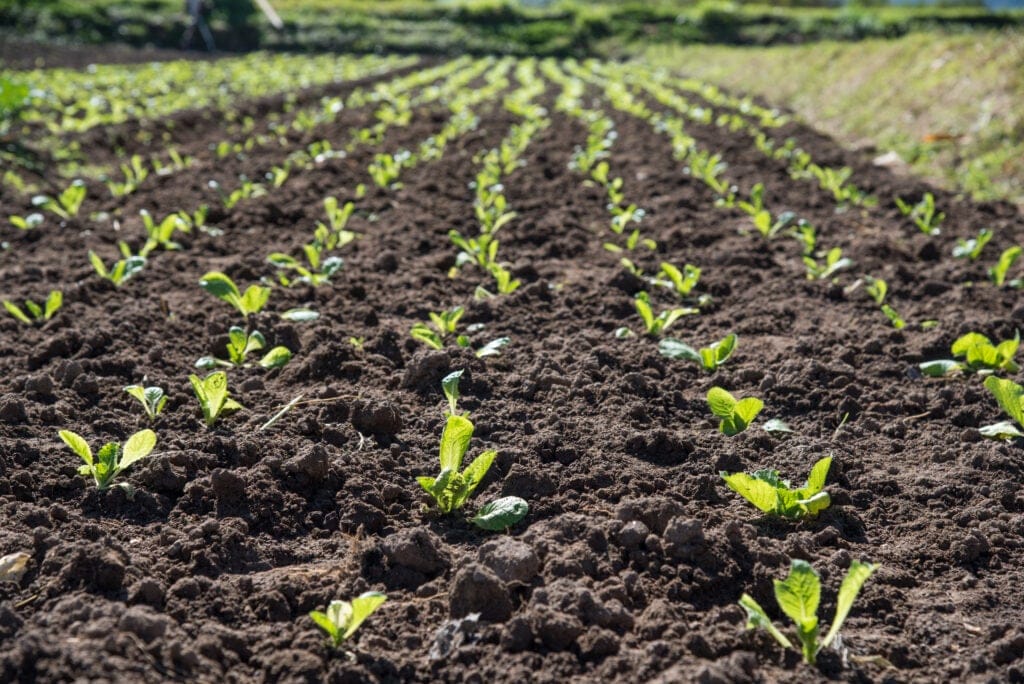
Once the last frost of the year has happened you can transplant your Kale outside. If you transplant your kale before the last frost it may die. To help prevent this I recommend planting it in a raised garden bed.
- Related: Best Raised Garden Beds
Below, is a 2 step process for transplanting your Kale outside into your garden.
Step 1 – Do THIS if you will be keeping your Kale in its container all summer!
If you decide to keep your Kale in the pots then there is no need to transplant. You will only need to apply compost or Miracle-Gro Potting Mix
- Apply approximately 1/4 inch of potting mix to your planter
- As soon as you apply your fertilizer make sure to water the Kale for approximately 15 to 30 seconds
- Every week until harvest water your Kale twice a day and keep it in full sun to promote fruit growth.
If you want to learn more about growing Kale in containers, I recommend watching the below video:
Step 2 – Do THIS to Transplant your Kale into your Garden!
- About 1 month before you plan on transplanting your kale into a garden dig holes about 8 inches deep and filling it with compost. Space holes 12-18 inches apart.
- Dig your holes in an area that will receive partial shade.
- Then after the last frost transplant your kale into the garden exactly the same way you transplanted it into the larger pots.
- Immediately after you transplant your kale outside add
Miracle-Gro Plant Food and water the soil for about 30 seconds. - Finally, water your kale once a day for about 30 seconds. Continue doing this until you harvest your kale mid-summer.
- Related To: Best Garden Hoses
Tip #4: Starting Kale Seeds in a Garden

Kale is one of the easiest vegetables to grow outside, no matter where you live.
Whether you do not have the ability to start your seeds indoors or just want to start your seeds directly in a garden then I recommend following the below directions:
Step 1: Start Your Seeds After the Last Frost
You should always start your kale seeds after the last frost. Kale seeds will germinate best at temperatures between 50-65 degrees Fahrenheit.
With that being said, they can even grow in weather as low as 40 degrees!
If you want to know your last frost date then I recommend Clicking HERE.
Step 2: Plant Your Seeds This Way!
Once you decide to start seeds outside you will want to do the following simple steps:
- Find a location that is partial shade and cooler and has a pH level between 6.0-7.0.
- Dig 1/8 inch holes with the tip of your finger or a pencil.
- Keep holes approximately 2 feet apart to allow for the most kale grow.
- Lightly sprinkle 4-5 kale seeds in each spot. It should be noted that not all seeds will germinate and you can always thin your plants out after they grow.
- Lightly cover your seeds and spray 8-10 times until the soil turns a dark brown color.
Step 3: Continue Watering your Seeds
After you initially plant your kale seeds you will want to water them 2-3 times a day until the soil is dark brown.
You will do this until the seeds germinate and then continue doing this until they become at least 3 inches tall.
*If the weather is hotter than usual for your garden then you may need to water several more times a day then described above.
Tip #5: Effectively Care for your Kale THIS Way!

Below are caring tips for your Kale throughout the summer:
- Keep Your Soil Healthy – Quickly inspect your soil for fungus, harmful insects, and weeds before you plant and throughout the summer. Remove and replace it with new soil as needed.
- Water the soil, not the plants. By watering leaves, you increase the risk of spreading fungus and other diseases. Do not overwater as it will increase the likelihood of disease.
- Remove diseased and dead plants. This is the easiest way to prevent the spread of deadly diseases. If you notice yellow spots on leaves it means you may have blight fungus and will want to remove the leaves.
- Plant your kale at a new spot yearly. This is key to preventing seasonal diseases and insects from attacking the same plants year in and year out.
- Prevent Insects. The best way to prevent them is through an insecticide. If you don’t want aphids, slugs, or cabbage worms ruining all your hard work I recommend purchasing Garden Safe Pesticide
Tip #6: Effectively Harvest Kale THIS Way!
Below are several tips to remember when harvesting Kale:
- Harvest your Kale 3 to 10 weeks after planting.
- Harvest your kale frequently. This will help thin it out, ensure the best flavor possible, and helps to prevent seeding.
- Always pick your kale where it meets the stalk.
- Pick your kale from the outside to the inside.
Frequently Asked Questions (5 Questions)
1. What are the best ways to store kale?
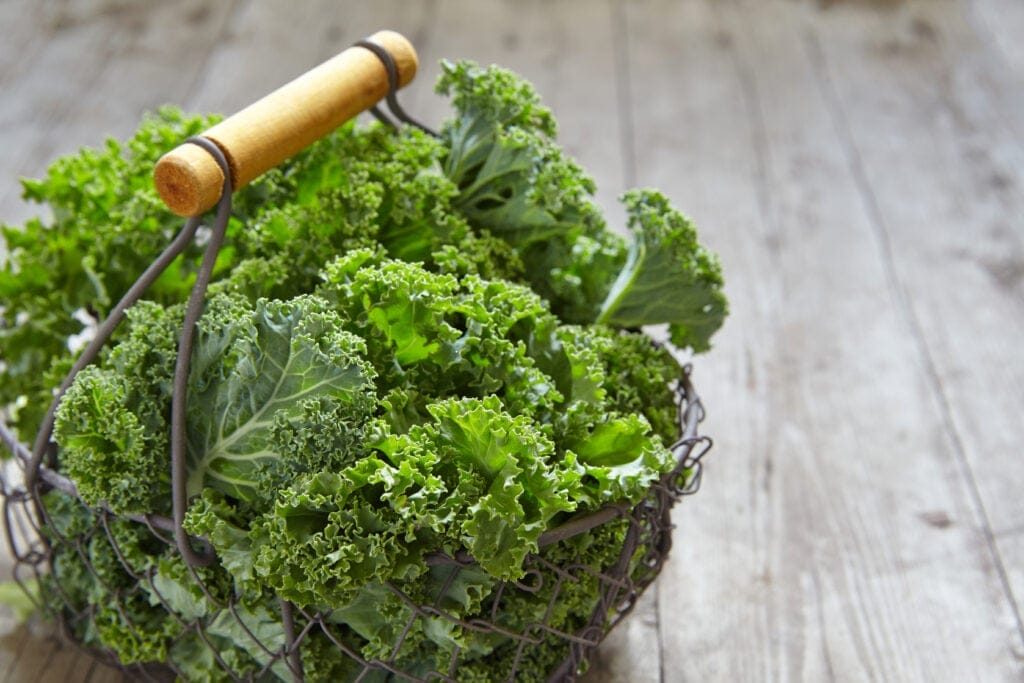
Below, will give you several guidelines to store kale longer:
- Once you harvest your kale it will store at room temperature for only 1-day maximum.
- If you wash your kale and place it in a zip-lock bag your kale can last 2-3 days.
- If you wash your kale and place it in a zip lock bag with several layers of damp paper towels your kale can store in the fridge for up to 1 week.
2. What are the Best Uses for Kale?
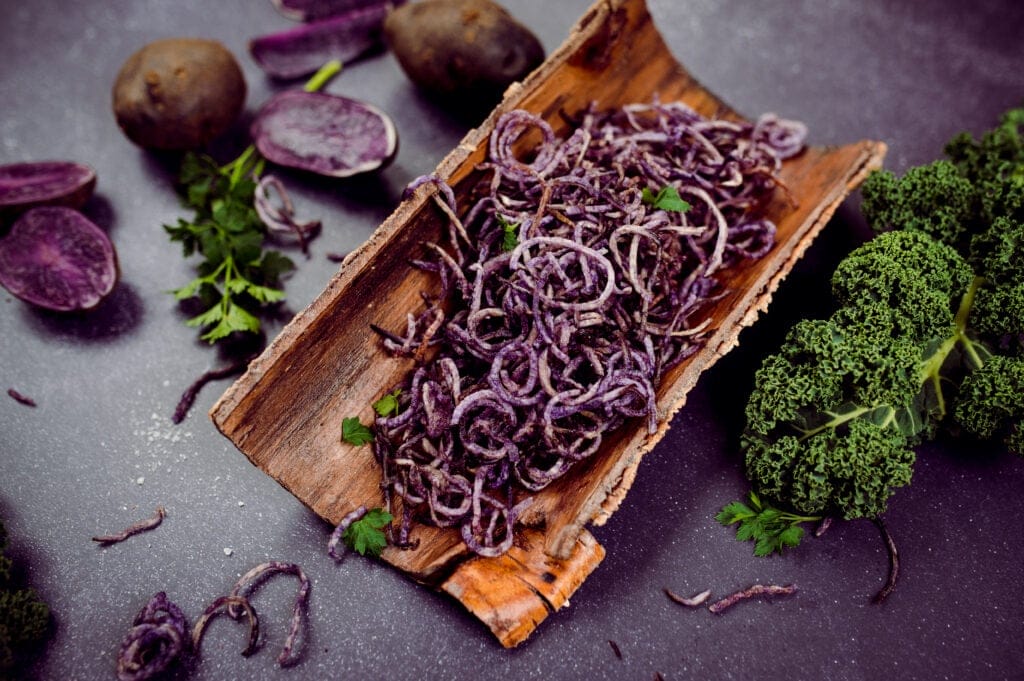
There are numerous uses for kale in food. Below, are some of the best ways to use kale:
- Salads
- Sandwiches
- Smoothies
- BLT
- Related: 47 Kale Recipes
3. What type of Kale Seeds should I Use?
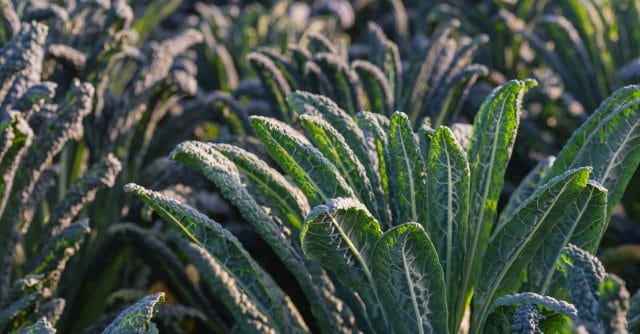
There are four types of seeds that can be used to grow kale; heirloom, organic, hybrid, and GMO.
I recommend using Heirloom or Hybrid seeds. Gardeners do not have access to GMO seeds and organic seeds is a marketing term and not truly a type of seed.
A. Heirloom
- These seeds contain all the kale original traits and produce some of the most beautiful and best-tasting kale out there.
- The downside of this seed is that it is the costliest (due to its rarity).
- In addition, expect the least amount of yield from this type of seed due to susception of disease and other elements.
B. Hybrid
- Hybrid seeds were made from combining the genes of the same group of plants. This is not a bad thing.
- This type of seed is what most gardeners use when learning how to grow kale from seed.
- The goal with hybrids is to produce a plant that contains the best features of both parent plants.
- This seed is critical if you want the most resistant plant against mother nature’s elements, insects, and diseases or want the most yield!
4. What Type of Fertilizer Should I Use for My Kale?
The best type of fertilizer for kale is compost.
- Related: Ultimate Composting Guide: What to Compost
- Related: Yimby Tumbler Composter: 5 Reasons to Buy Today
And if you don’t have the time or ability to create compost then I recommend buying Miracle-Gro Plant Food for your kale.
5. What Type of Soil Should I Use for My Kale Plants?
If you will be keeping your kale plants in containers all year then you will want a well-draining potting mix that provides the correct amount of nutrients like Miracle-Gro Potting Mix.
If you will be planting your kale into a garden then you will want to add a nutritious garden soil mix into the ground, such as Miracle-Gro Expand N Gro



